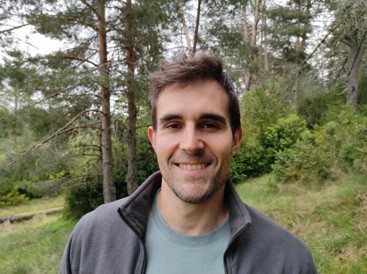INSTITUTE SEMINAR
Hypoxia, physiology and a neuropathy: a tale of mitochondrial Na+
Speaker
Pablo Hernansanz Agustín
Date and time
October 20 2023 12:30
Place
Cajal Institute
Abstract
Mitochondrial metabolism and bioenergetics are key for a panoply of (patho)physiological scenarios. So far, the role of mitochondrial Na+ has been assigned as merely supportive for Ca2+ homeostasis. In the last few years, we have shown that, thanks to Na+ entry into the mitochondria during hypoxia, Na+ acts as a second messenger regulating the oxidative phosphorylation system (OXPHOS) and the production of reactive oxygen species by modulating the fluidity of the inner mitochondrial membrane.
Intriguingly, the molecular player in charge of mitochondrial Na+ exit is currently unknown. Using a rainbow of mitochondrial and nuclear genetic models, we have identified it as, specifically, mitochondrial complex I (CI). This CI activity creates a transmitochondrial Na+ gradient, parallel to ΔpH, which accounts for half of the ΔΨmt in coupled respiring mitochondria. We also found that its deregulation is the cause of the molecular pathogenesis of a neuropathy with a previously unknown aetiology.
Affiliation and short bio

I initiated my studied in Biology in the Universidad de Alcalá de Henares (UAH) and finished my degree in the University of Hertfordshire (UK). After completing a Master in Cellular and Molecular Biology by the Universidad Autónoma de Madrid (UAM) I successfully obtained my PhD in Biomedicine by the UAM, during which I performed four different temporary stays at the University of Zurich (Switzerland) and University of Cambridge (UK). Currently, I am a postdoc in Centro Nacional de Investigaciones Cardiovasculares (CNIC) in José Antonio Enríquez’s lab.
I am author of 27 scientific publications (h-index: 18) in world leading journals, such as Nature, Science Advances or Redox Biology, among which the most relevant contributions are: (i) the elucidation of the mitochondrial ROS paradox during hypoxia (Free Rad Biol Med, 2014); (ii) the confirmation of the OXPHOS plasticity model (Science Advances, 2020); (iii) the discovery of a role for the mitochondrial calcium-phosphate precipitates, which function remained obscure for decades (iv) and the discovery of Na+ as a second messenger (Nature, 2020). For my work, I have received several young investigator awards and fellowships, such as “Juan de la Cierva – Incorporación “and “Ramón y Cajal”.
Related publications with the topic
- Hernansanz-Agustín P, Choya-Foces C, Carregal-Romero S, et al. Na+ controls hypoxic signalling by the mitochondrial respiratory chain. Nature. 2020;586(7828):287-291. doi:10.1038/s41586-020-2551-y
- Calvo E, Cogliati S, Hernansanz-Agustín P, et al. Functional role of respiratory supercomplexes in mice: SCAF1 relevance and segmentation of the Qpool. Sci Adv. 2020;6(26):eaba7509. Published 2020 Jun 24. doi:10.1126/sciadv.aba7509
- Hernansanz-Agustín P, Ramos E, Navarro E, et al. Mitochondrial complex I deactivation is related to superoxide production in acute hypoxia. Redox Biol. 2017;12:1040-1051. doi:10.1016/j.redox.2017.04.025
- Hernansanz-Agustín P, Izquierdo-Álvarez A, Sánchez-Gómez FJ, et al. Acute hypoxia produces a superoxide burst in cells. Free Radic Biol Med. 2014;71:146-156. doi:10.1016/j.freeradbiomed.2014.03.011
